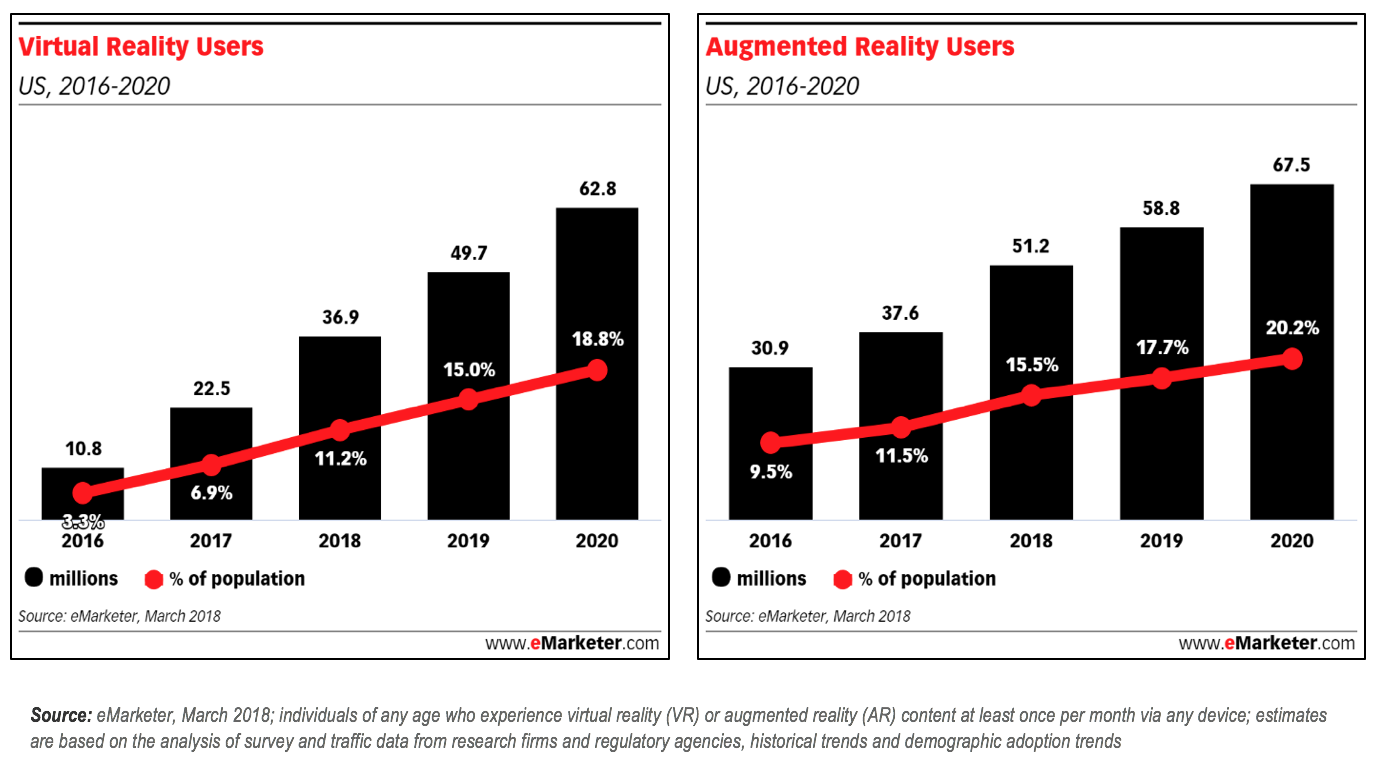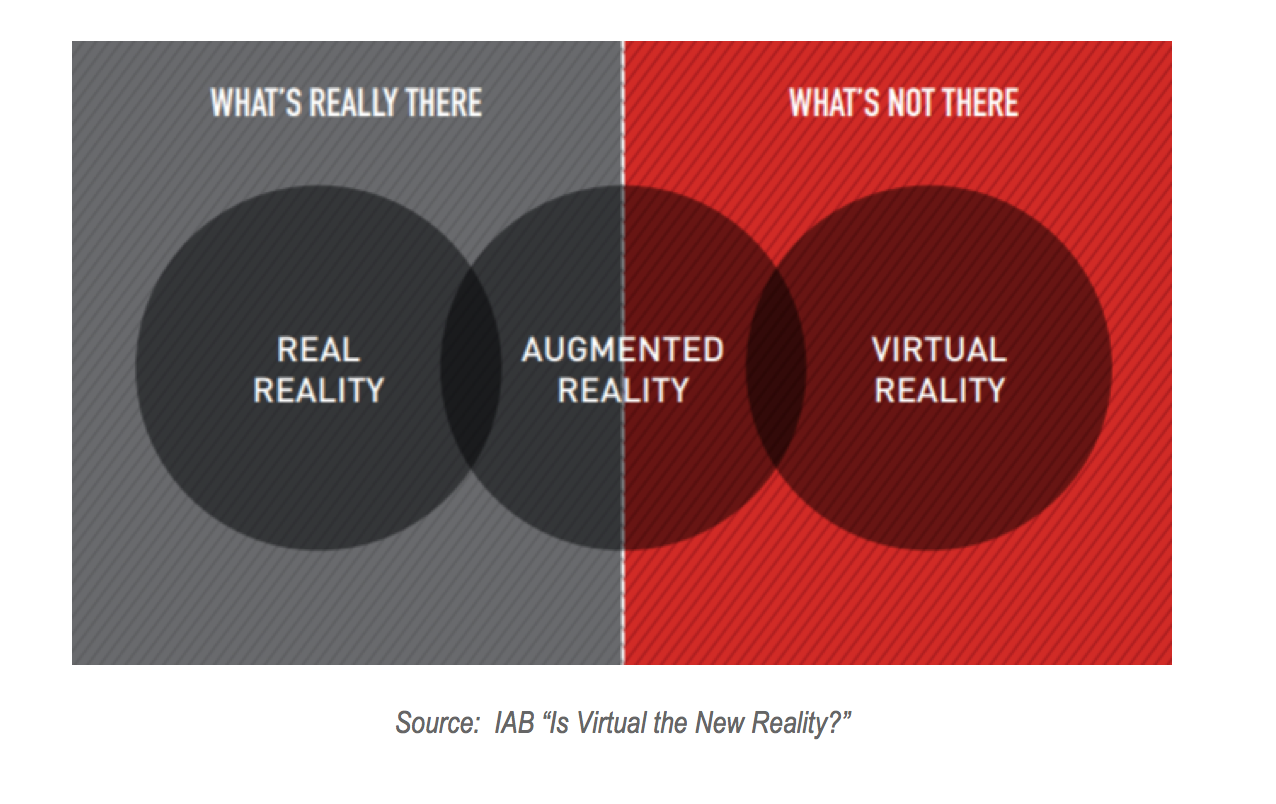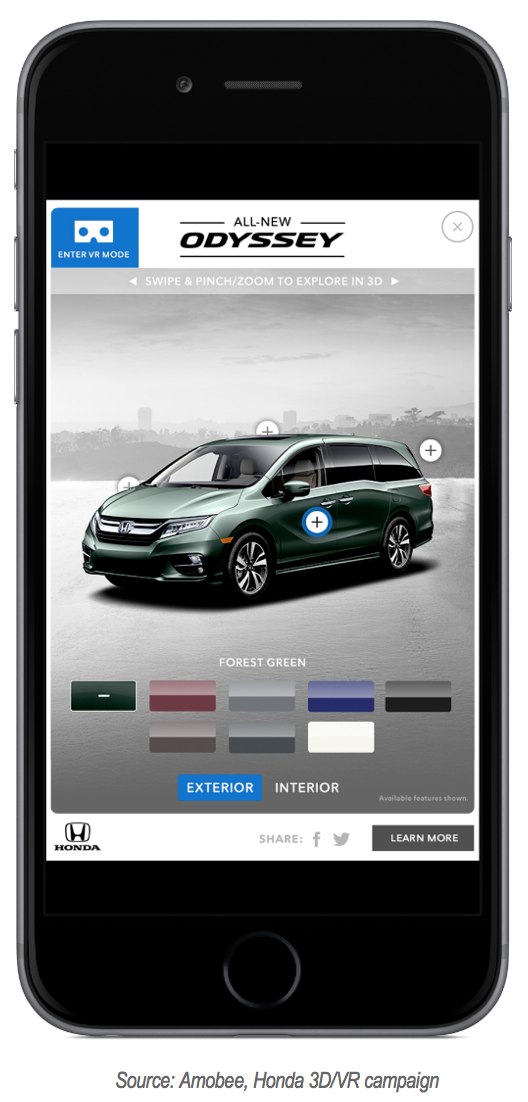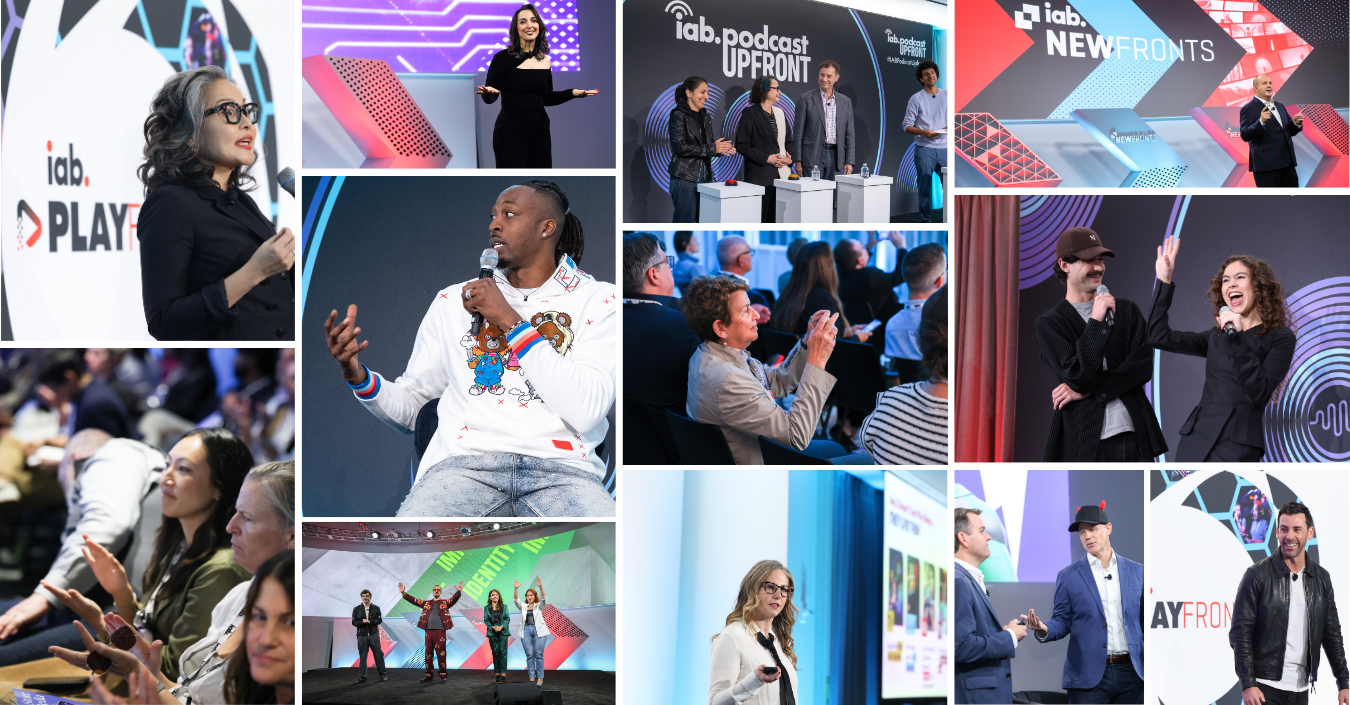Imagine that you have an important event next month that requires a new outfit. However, the thought of getting in your car to drive to a local department store and fighting the crowds while you shop sounds less than appealing. Imagine instead, slipping on a sleek headset in the comfort of your home and visiting the store virtually. You could browse their clothing selection, try on any garment in this virtual environment, and then order your outfit of choice for home delivery.
While this dream scenario is not quite yet a reality, examples of virtual reality (VR) and augmented reality (AR), which enable these future scenarios, are very real and all around us. Consumers today are utilizing VR and AR more than they may even realize: from using their mobile phones to take selfies with creative filters over their faces to playing games like Pokémon GO that, as we saw, captivated kids of all ages, making play part of the everyday environment and allowing players to catch Pokémon (and each other). Consumers also can watch VR video that enables them to view worlds—real or imagined—in every direction or even view their favorite sports game or concert series in virtual reality from their living room couch.
AR and VR usage is on the rise. According to eMarketer, there will be 36.9 million users of VR in 2018. That number is expected to increase 70 percent in two short years. AR will have 51.2 million users in 2018 with an expected increase of 32 percent by 2020. The base of enabled devices will also continue to grow, which will help drive usage in a positive trajectory. For example, the global installed base of ARCore (Android) and ARKit (iOS) is 1.8 billion this year and expected to reach over 4 billion in 2020. (Source: ARTillery, ARCore and ARkit: Accelerating Mobile AR, Sept 2017).
 |
As a result of increased usage and the potential of these technologies, many industries are starting to explore AR/VR use cases—including the advertising industry as a way for marketers to tell engaging stories that create meaningful interactions with consumers.
However, as this space is still relatively new, there needs to be further education to help foster increased interest and investment in AR/VR. To that end, we were happy to partner with IAB to create a glossary of AR and VR terminology. The goal of this glossary is to ensure that publishers, agencies, and advertisers are on the same page as they start to explore opportunities with these formats and ensure industry-wide consistency and confidence. The glossary identifies and defines the different types of AR/VR, the necessary equipment needed to create these experiences, terms that help describe the experience, and the metrics that are being utilized to measure these ad formats.
Benefits for AR/VR Marketing
Overall, the immersive and interactive nature of AR/VR provides an unprecedented opportunity for audience engagement. However, while we have been referring to AR and VR together, the two technologies are separate and provide different benefits to brands.
 |
As this glossary helps delineate, augmented reality refers to an experience that utilizes a camera to take the brand and place it in the user’s existing world. It’s entirely dependent on the physical environment surrounding the consumer. AR advertising allows for the near-seamless integration of other advertising channels into an interactive ad campaign and allows for the transformation of previously non-interactive media (video, print, or even the presence of a branded product) into highly interactive media through AR activations.
While they have their differences, AR and VR both provide superior strategies for marketers to tell stories that capture the entirety of a user’s attention and invoke natural exploratory curiosity. Virtual reality is independent of user context and replaces the real world in its entirety. VR advertising allows the user to be completely immersed into an environment of the marketer’s choice, which instantly commands the total attention of the end user and allows marketers to craft incredibly compelling VR experiences. VR offers opportunities for advertisers to connect with their audience in a visceral way that traditional channels cannot achieve.
Challenges for AR/VR Marketing
As with any nascent space, there are obstacles to overcome such as:
Feasibility: Brands often do not know what assets they will need to enable AR/VR ads and how difficult it will be to create these units. Further education will help overcome this particular challenge.
Scale: Deeply immersive AR and VR experiences—beyond what exists via common iOS and Android smartphone technologies—requires hardware, like advanced headsets, that are currently in an adoption phase. Most AR executions on mobile, for instance, leverage common device APIs and in-app SDKs that activate the user’s camera. While use of these mobile-based AR experiences is growing, it’s still early days in terms of scaled monetization and easy execution by brands.
ROI & Measurement: As referenced in the measurement section of the glossary, there is no standardized reporting for AR/VR advertising efforts today and it can be challenging to know what success looks like. For example, comparing a “digital video cost-per-view” to a “VR cost-per-view” is not an apples-to-apples comparison. VR views are fully immersive compared to the 50 percent in screen standard for digital video and “watch time” in VR is generally much longer than two-second standard length for digital video.
 |
The future of AR/VR marketing
While we acknowledge these challenges, we remain extremely optimistic about the growth of these formats in the future and the benefits that AR/VR will provide advertisers. In the coming years, as headsets decrease in price, we’ll see greater user adoption with emergence of apps that contain wide varieties of truly fantastic AR/VR content. As a result, scale will increase as marketers become more comfortable with these emerging media forms.
Once that happens, we expect innovation to abound. For VR, a big opportunity is moving what is currently a largely solitary content experience towards a socially connected experience. Today there are constraints on creating avatars that can represent a person in real time, but this will be an exciting space to watch as those limitations fall away. For AR, we expect the real world to be fundamentally connected by an internet of things so the environment we move through becomes an operating system. For example, a consumer will be able to look at their nightstand through their phone to automatically trigger an alarm app and see their calendar for the next day.
As this space continues to evolve, we’ll work with IAB to help foster the growth of augmented and virtual reality advertising by providing updates to the glossary, creating best practices, and—in the near future—increased standardization for measurement.




